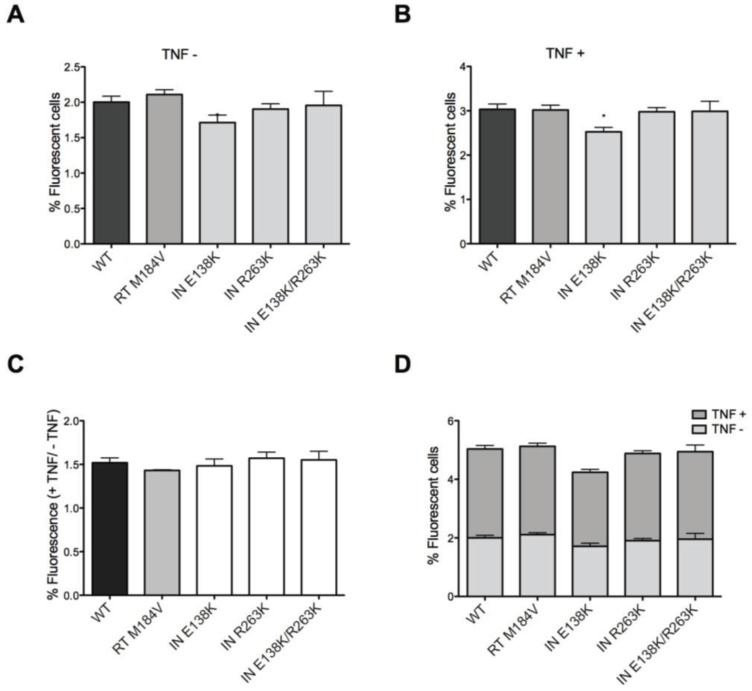Figure 2.
Establishment of and reactivation from latency by WT and drug-resistant viruses. (A) Expression of GFP reporter virus in Jurkat cells cultured in the presence of DRV after 7-days of infection. GFP expression in this experiment represents the background of actively replicating viruses that have not achieved latency. No statistically significant differences were observed between the various viruses; (B) Expression of GFP reporter virus in Jurkat cells grown in the presence of DRV for 7-days after infection, following overnight TNFα treatment to reactivate latent proviruses. DRV was used for the purpose of ensuring that only a single round of infection would occur. Only E138K resulted in a decrease in the proportion of infected cells (*); (C) Relative proportion of GFP-expressing reporter proviruses that became reactivated following TNFα treatment. The results show the relative GFP expression of reporter virus after TNFα treatment divided by relative GFP expression of reporter virus before TNFα treatment. No statistically significant differences were observed between the various viruses; (D) Comparison of TNFα-treated samples and untreated samples for each virus tested. No statistically significant differences were observed between the various viruses. Statistically significant results for drug-resistant mutated viruses compared with the WT control are indicated. Error bars represent standard error of the mean (SEM, two independent experiments, performed in triplicate).

